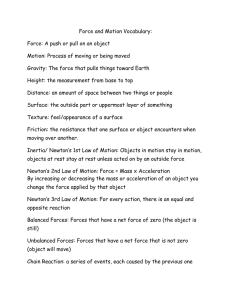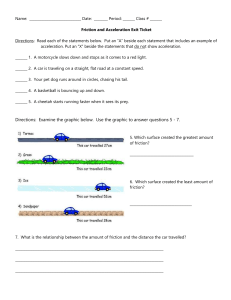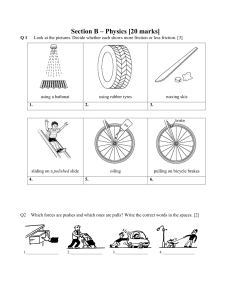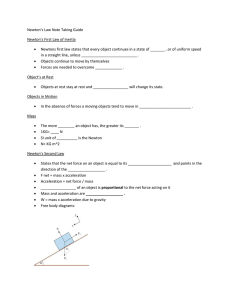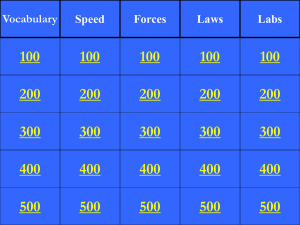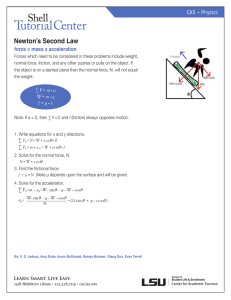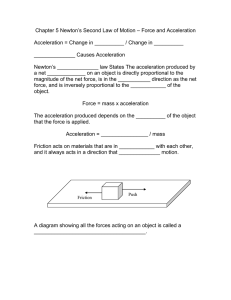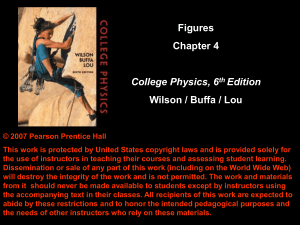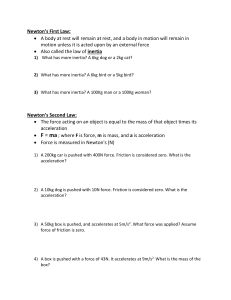Chapter 4 Study Guide 1. Define force
advertisement
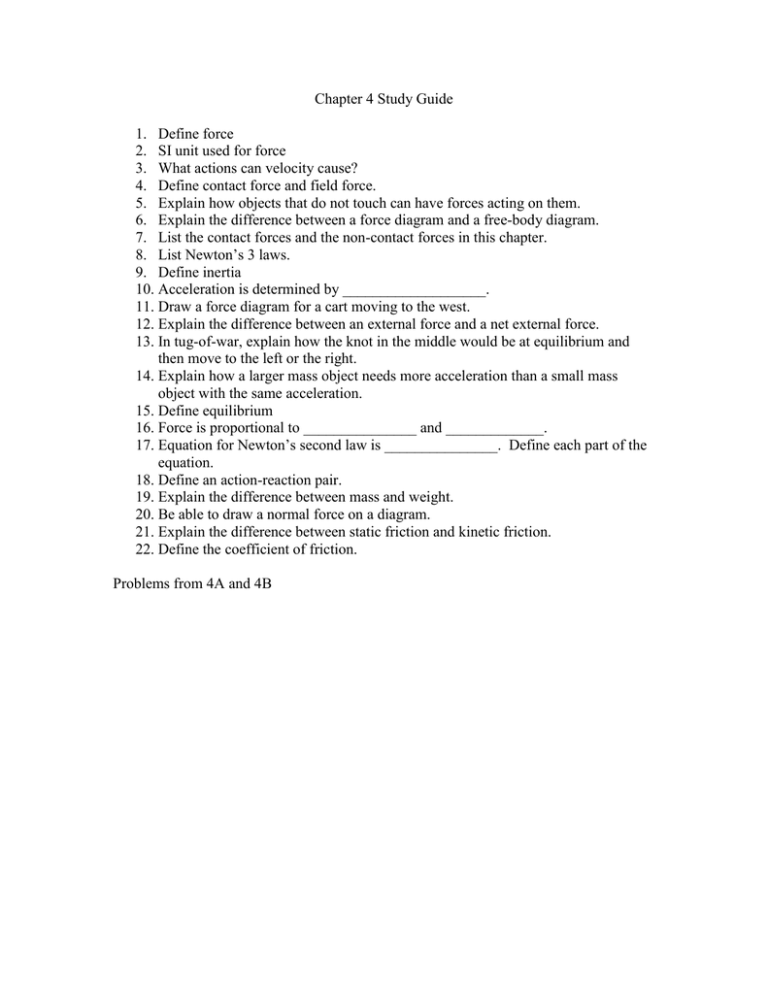
Chapter 4 Study Guide 1. Define force 2. SI unit used for force 3. What actions can velocity cause? 4. Define contact force and field force. 5. Explain how objects that do not touch can have forces acting on them. 6. Explain the difference between a force diagram and a free-body diagram. 7. List the contact forces and the non-contact forces in this chapter. 8. List Newton’s 3 laws. 9. Define inertia 10. Acceleration is determined by ___________________. 11. Draw a force diagram for a cart moving to the west. 12. Explain the difference between an external force and a net external force. 13. In tug-of-war, explain how the knot in the middle would be at equilibrium and then move to the left or the right. 14. Explain how a larger mass object needs more acceleration than a small mass object with the same acceleration. 15. Define equilibrium 16. Force is proportional to _______________ and _____________. 17. Equation for Newton’s second law is _______________. Define each part of the equation. 18. Define an action-reaction pair. 19. Explain the difference between mass and weight. 20. Be able to draw a normal force on a diagram. 21. Explain the difference between static friction and kinetic friction. 22. Define the coefficient of friction. Problems from 4A and 4B
